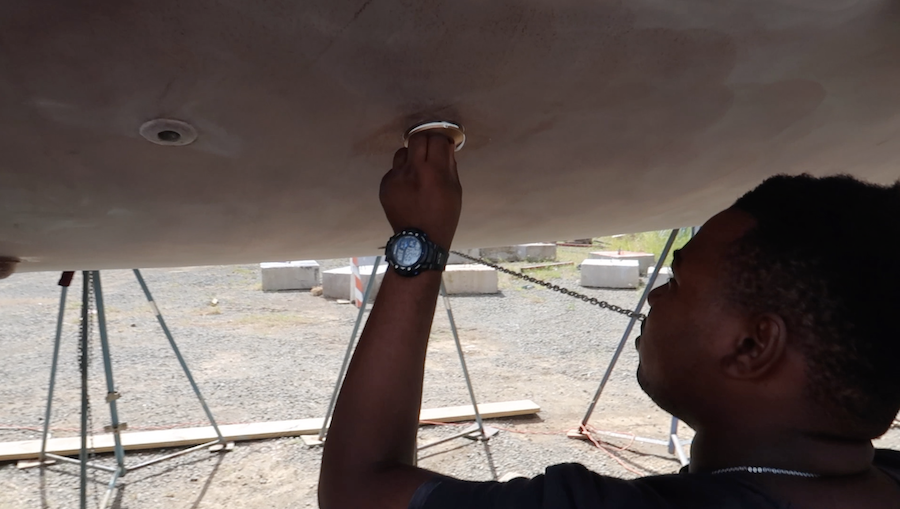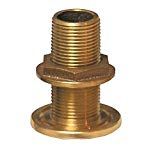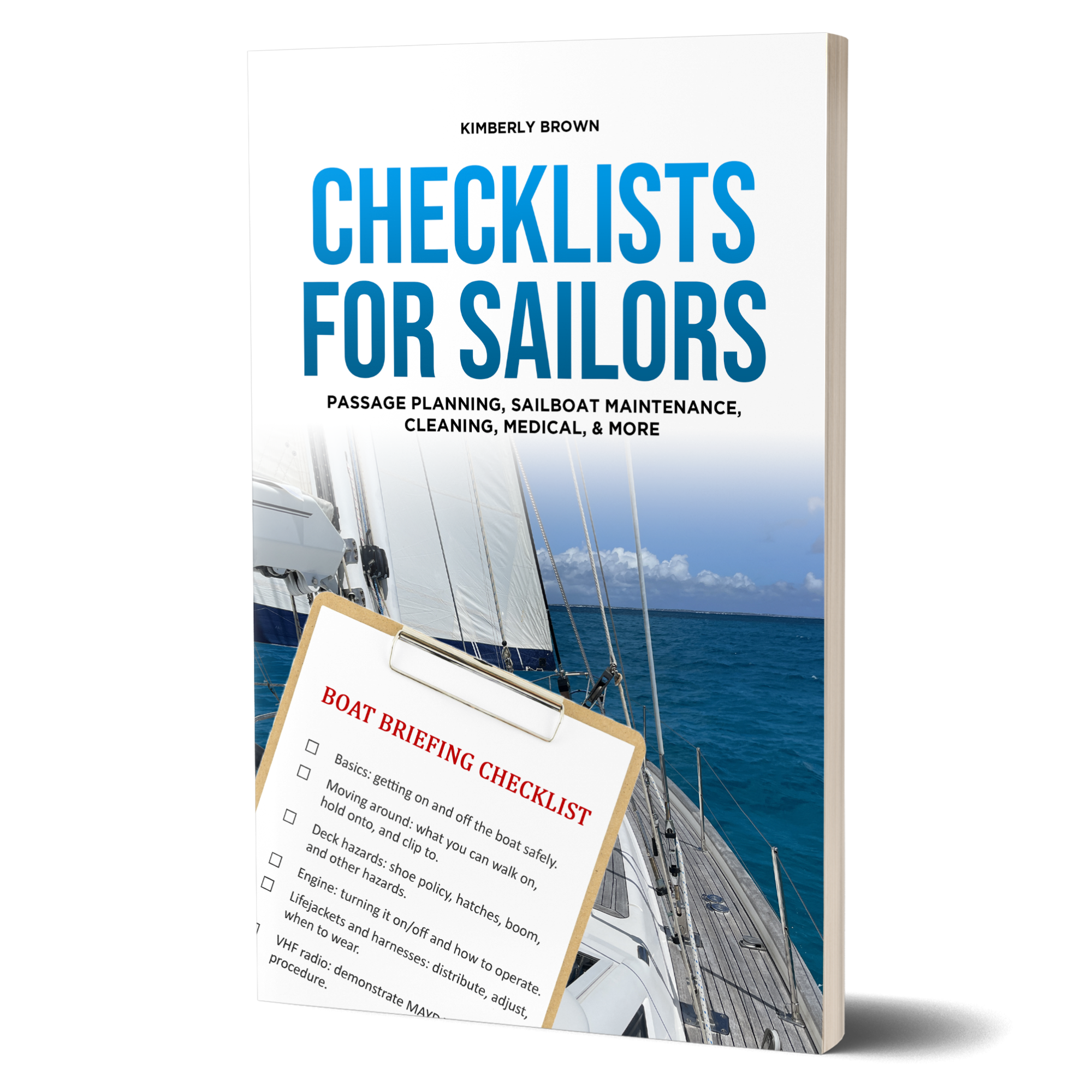In this sailing how-to video, Simon covers a thru-hull fittings seacock replacement. Simon also explains what they are, how they work, how they break and provides a demonstration on how to replace one.
Carry on reading below the video to find the products we used during our thru-hull fitting replacement, a checklist that covers the steps shown in the video and some tips.
Thru-Hull Fittings Seacock Replacement Video
Thru-hull Fitting Resources
3M 5200 Marine Sealant
There are not too many places you want to use this stuff as it’s IMPOSSIBLE to ever get it off. When replacing thru-hull fittings, however, this is the best stuff to use. To get more information on 5200 Marine Sealant check it out on Amazon.
Thru-hull Fittings
Depending on what material you want to use and how large the fitting is you can select the thru-hull fitting required. You can check out a wide variety of thru-hull fittings on Amazon.
Seacocks
There’s a wide range of seacocks. You’ll either want to replace like for like or determine if there’s something better out there. In our instance, we had to use the stopcock in the video as there were no other alternatives. Look at the seacocks on Amazon.
Pipe Wrenches
Depending on the size of the pipes you have on board you’ll need a variety of wrenches. Either that or one wrench that covers all your pipes. Check out pipe wrenches on Amazon.
Wooden Bungs
It’s good practice to attach a wooden bung next to every thru-hull fitting that you have. If something goes wrong the bung will be there when you need it. Get yourself a variety of wooden bungs from Amazon.
Thru-Hull Fittings Seacock Checklist – Getting It Off
- Gather the tools required to do the job including screwdrivers, a pipe wrench, chisel and possibly a heat gun and angle grinder.
- Remove the hose clamps attached to the hose.
- Remove the hose from the valve.
- Using a pipe wrench, remove the valve from the thru-hull fitting.
- Using a pipe wrench or a chisel remove the locking nut from the thru-hull.
- If it’s not coming free, you can apply heat with a heat gun to the exterior of the mushroom head.
- While the mushroom head is hot use a step wrench to break the thru-hull free from the hull and remove it.
- If the fitting was put in with a 5200 (a super-strong adhesive), & won’t break free, try sliding a longer pipe over the wrench handle providing more leverage. You can also use a pipe wrench on the threads to break it free but this will ensure total destruction of the thru-hull.
- If you can’t the fitting free, as seen in our video, use an angle grinder and grind it off being very careful not to get it too hot. You don’t want to burn the hull!
If you like checklists, you’ll love this!
Thru-Hull Fittings Seacock Checklist – Putting It On
- Once the fitting is off, clear up the area.
- Determine if you need a backing plate or not.
- With the thru-hull bottomed out into the flange measure from the outside of the hull to the mating side of the mushroom-head. Take this measurement and add 1/4 of an inch.
- Insert the thru-hull fitting into a vice carefully clamping the threads that need to be cut off, not the threads your keeping.
- Hack saw cut the thru-hull to its required length if required and clean the threads.
- Put 5200 on the outside mushroom top and feed into the hole.
- Add 5200 on to the bolt and screw it down from inside the boat – ensure that the fitting is sitting correctly on the hull or backing plate.
- Fix seacock in place.
- Reattach the hose.
- Test! When you splash to ensure that you check any thru-hull fittings before allowing the crane to leave!

Thru-Hull Fittings Tips!
- Make sure that you have a map of every thru-hull fitting on the boat. Put the map in your navigation station table or tape it inside a cupboard that’s easily accessible. If water is coming into the boat you can quickly refer to your map and start a process of elimination by looking at the thru-hull fittings.
- Exercise your fittings every month. Make the first of the month seacock exercise day 🙂
- You don’t want to scrimp when it comes to thru-hull fitting seacock replacements. Make sure it’s all Marine grade.
- Unless your hull is close to a 3/4″ thick, of solid fiberglass, you will need a backing plate for the seacock. Backing plates are designed and used to allow for any stress loads over a larger area. They also help to reduce and minimize any flexing of the hull at the seacock to minimize the chance of leaks.
Any Questions Or Comments?
Please leave them below.





Enjoy all your videos, very informative. Can you do a follow up on the success of the egg whites on the prop??
Still to date, Alan, the egg whites is proving to be the best. Simon just put some kind of specialist prop stuff on when we were out having the CopperCoat applied. Already he’s saying that it wasn’t worth the money. Smiles, Kim
Hi folks a brilliant instructional video, I really enjoyed watching the clear content, I have just retired from flying micro lights and I have purchased an 18 foot sailboat which is at Porthmadog in north wales as a starter boat to learn the water around the area before I step up to something which actually has sea cocks. Some good friends have a larger boat than me at Porthmadog and I will crew for them if they need an extra hand. I am looking forward to the season and learning the skills of sailing. Good Luck with all you plan and Happy New Year!
Thank you for your comments Steve. Enjoy your season. Smiles, Kim
Hi, thanx for a great video. Question… did the installer use 5200 on the thread of the thru hull instead of something like locktite?
TIA
Lee…it was so long ago I can’t remember. You’d think it would be locktite because 5200 will never budge. But then again, maybe you want 5200 on that kind of fitting. You don’t ever want to take it off?! Sorry that my memory is not working. Smiles, Kim